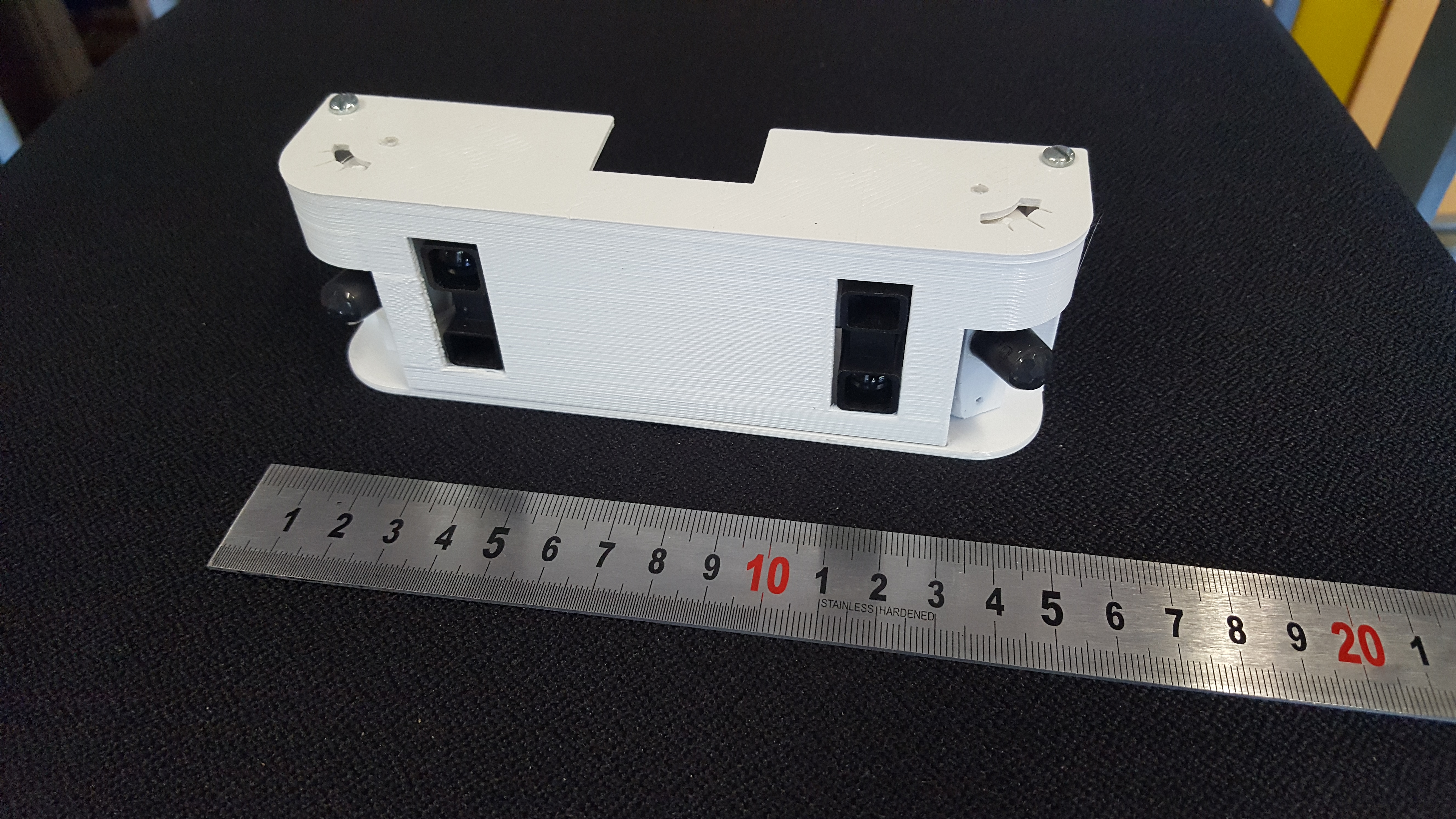Section: New Software and Platforms
Platforms
We describe here only the new platforms that have been developed in 2016 while we maintain a very large number of platforms (e.g. the cable-driven parallel robots of the MARIONET family, the ANG family of walking aids or our experimental flat).
GMSIVE ADT: virtual reality and rehabilitation
Inria has agreed to fund us for developing the platform GMSIVE whose purpose is to introduce end-user motion and their analysis in a virtual reality environment in order to make rehabilitation exercises more attractive and more appropriate for the rehabilitation process. For example we have developed an active treadmill whose slope will change according to the user place in the virtual world while the lateral inclination may be changed in order to regulate the load between the left and right leg. Such a system may be used in rehabilitation to simulate a walk in the mountain while increasing on-demand the load on an injured leg (that is usually avoided by the user) for a shorter rehabilitation time. At the same time the walking pattern is analyzed in order to assess the efficiency of the rehabilitation exercise.
The motion system is composed of two vertical columns whose height may be adjusted (they are used for actuating the treadmill), a 6 d.o.f motion base and a cable-driven parallel robot which may lift the user (in the walking experiment this robot may be used to support partly the user while he is walking allowing frail people to start the rehabilitation earlier). We intend to develop sailing and ski simulators as additional rehabilitation environment. Currently the columns and motion base are effective while the robot has been installed but not tested yet and we have started to study the coupling between the motion generators and the 3D visualization.
Activities detection platform
For non intrusive activities detection we use low cost distance and motion sensors that are incorporated in a 3D printed box (figure 1) and constitute a detection station. Several such station are implemented at appropriate place in the location that has to be monitored (e.g. the Valrose EHPAD where 15 such stations has been deployed at the end of 2016 while 17 stations will be deployed at Institut Claude Pompidou at the very beginning of 2017). Although the information provided by each station is relatively poor an appropriate network of such station allow us to provide the information requested by the medical community.



